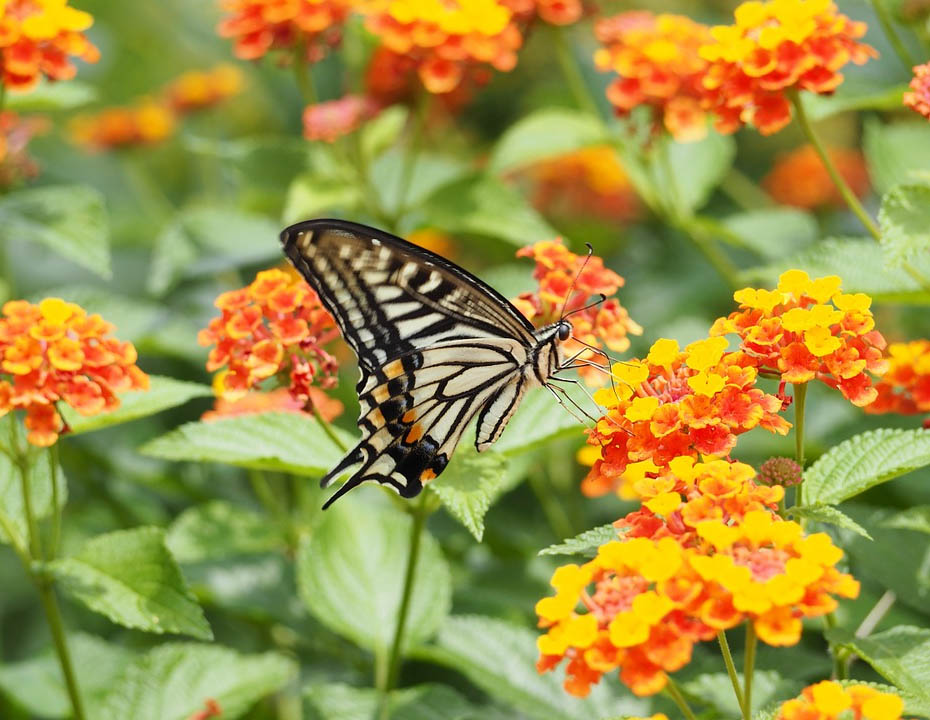by Kenan White | Jan 13, 2022 | Basics, Books & Design, Flowers, Gardening, Herbs, Inspiration, Miscellaneous, Wildlife |
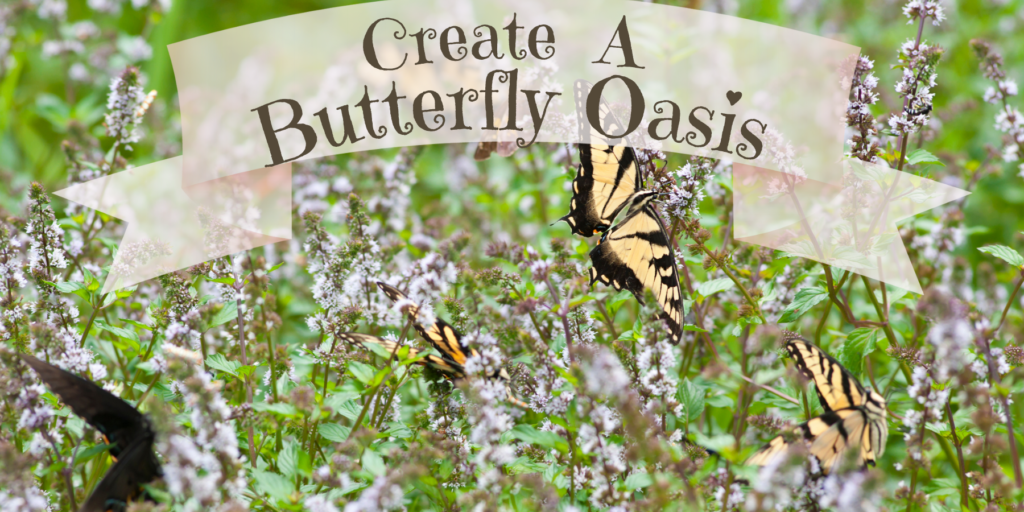
Butterfly gardening can be a wonderful way to experience wildlife in your garden, encourage pollination, and it takes very little maintenance, giving you more time to enjoy the beauty of watching butterflies flock to your plants. Many people who have maintained a butterfly garden for such a long time actually enjoy having visitors to come and look at their creation. This is also a great way to give back to your local ecosystem, as many natural habitats for butterflies and other pollinators have been destroyed by urban development and human interference. We always let about half of our test garden go wild in the summer, in addition to the many flowering shrubs and trees throughout the yard, to give butterflies a safe place to feed and lay their eggs. This is common practice, and we let this happen until the flowering shrubs and trees start to become an issue.
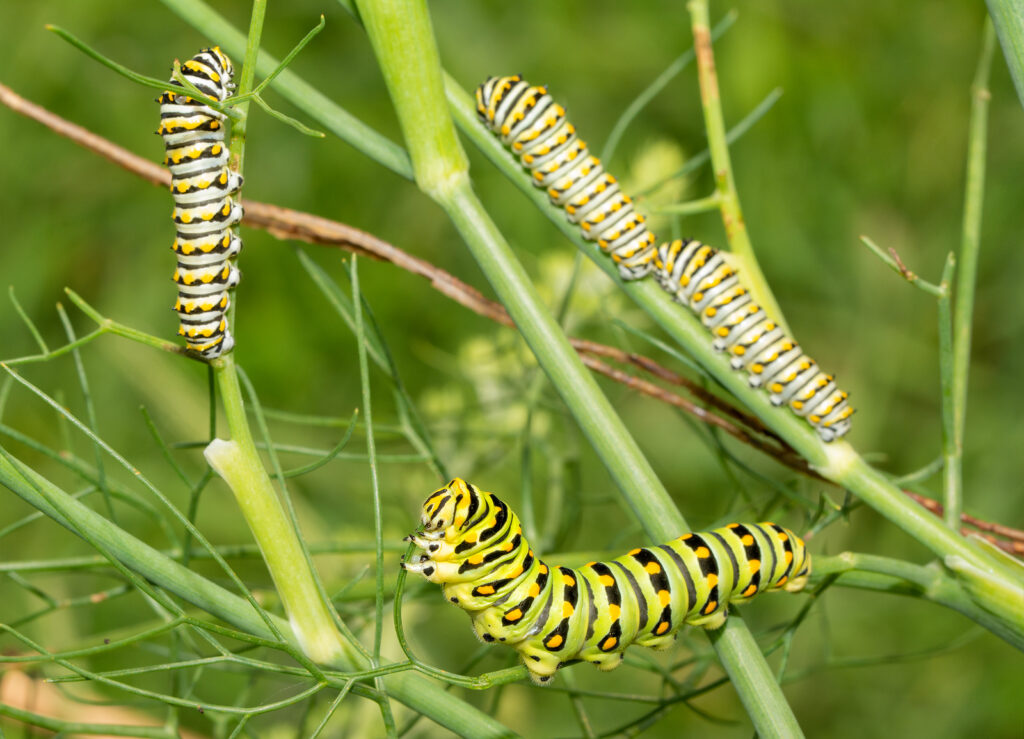
Here’s a wonderful photo showing a Fennel plant hosting Eastern Black Swallowtail butterfly caterpillars
In planning your butterfly garden, make sure to plant plenty of host plants and feeder plants. Host plants are specific herbs, flowers and other plants, that mature butterflies lay their eggs on because they create a safe haven for their young who will also feed on these plants once they become caterpillars. Be aware that these plants will be the sole food source for caterpillars, so it will be pretty heavily snacked upon. Because these may look rather ragged by the time the caterpillars are done munching on them, you may want to add these to the back of your garden, but still close to feeder plants so that the caterpillars are able to find them easily in their next stage of life. Some common host plants include Fennel, Italian Flat Leaf Parsley, Dill, Broccoli, Sunflowers, and Butterfly Flowers (also known as Milkweed).
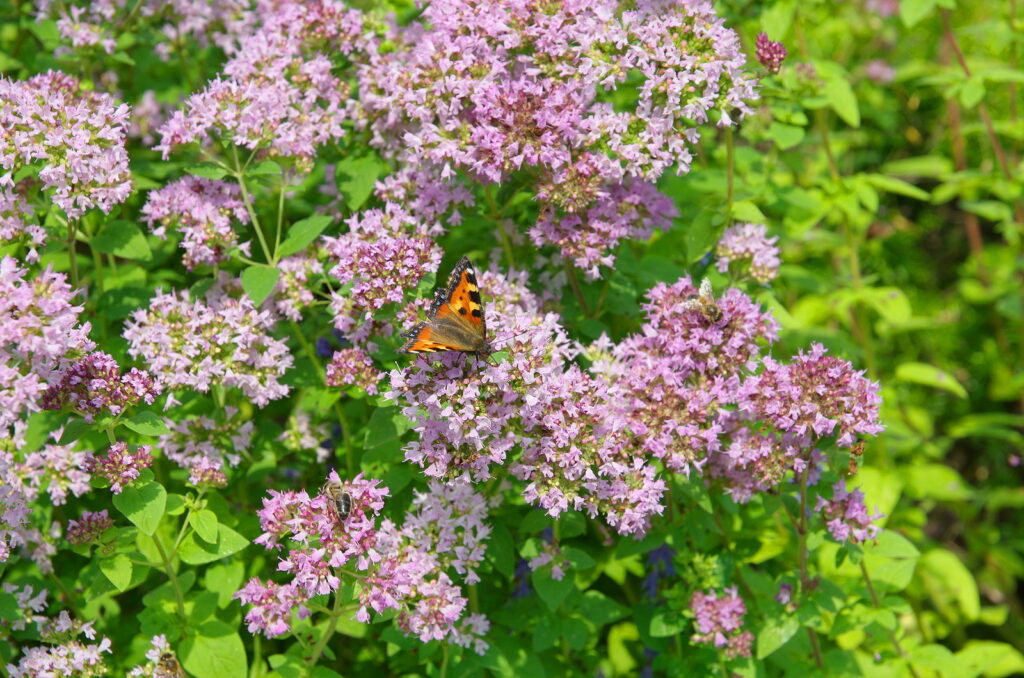
Butterfly on the flowers of oregano (lat. Origanum vulgar)
Feeder plants are nectar rich plants that adult butterflies will feed on throughout the season. These will also attract other helpful pollinators to your garden like honeybees and hummingbirds! Feeder plants tend to be fragrant and brightly colored, and you may be surprised to find that you already have many in your garden already. Some common varieties from our garden include Lantanas, Buddleias (also known as “Butterfly Bushes”), Joe Pye Weed, Bee Balm (Bergamot), Garlic Chives, and Oregano.
- Remember to plant your perennial butterfly plants toward the back of your garden and your annuals toward the front, for easy seasonal replacing.
- Don’t forget to incorporate herbs into your butterfly garden! Many herbs are perennial and will provide you with a safe haven for caterpillars and beautiful blooms when they flower. You can also use them in many other ways!
- Choose an area that is protected by the wind, as butterflies are delicate and don’t want to fight strong breezes to feed.
- Provide a water source, such as a birdbath or a shallow bucket filled with water with sand in the bottom.
- Avoid using pesticides on your plants as these will harm the butterflies and their young.
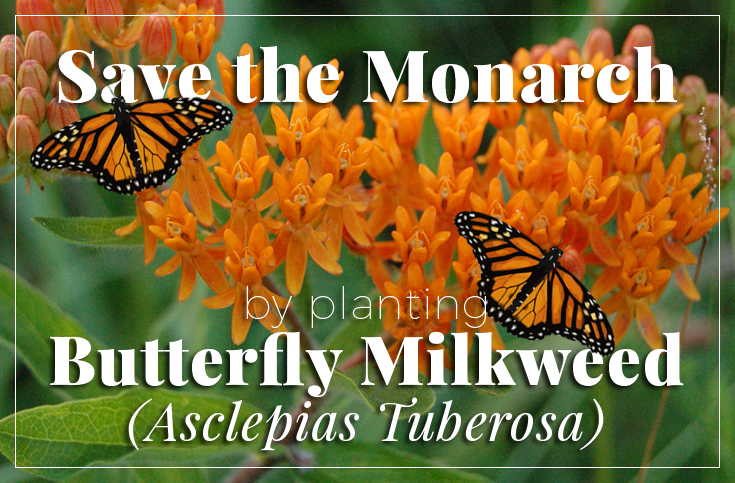
by Herb Exchange | Oct 6, 2019 | Gardening, Basics, Herbs, Miscellaneous |
Butterfly Milkweed (Asclepias Tuberosa) is a native plant that creates a wonder area of your garden for monarch butterflies. The Growers Exchange wants to encourage our gardening friends to set aside a sunny space in their gardens to help these majestic butterflies thrive and slow the decline of their population. Monarch’s exist because of milkweed plants.
The bad news: there can be no question that natural habitats, areas where monarch butterflies live, are being destroyed at an alarming rate. Habitat destruction, defined as changing an area in which a plant, animal or other organism lives to the point where that species can no longer survive. The destruction is generally described as either actual destruction, degradation or fragmentation. In the case of the Monarch butterfly, the major threat to their survival is the loss of milkweed habitat, which is an essential plant in their life cycle. According to the U.S. Fish and Wildlife Service, the counts of Monarch butterflies are trending down sharply, and their migration is now under threat.
The monarch butterfly population has declined over 80% in the last 20 years.
The good news: restoration of habitat can be achieved with very little effort on the part of concerned gardeners. You can easily offset this loss of a critical host plant in your own yard by planting milkweed, the vital host plant for Monarch butterflies. (more…)
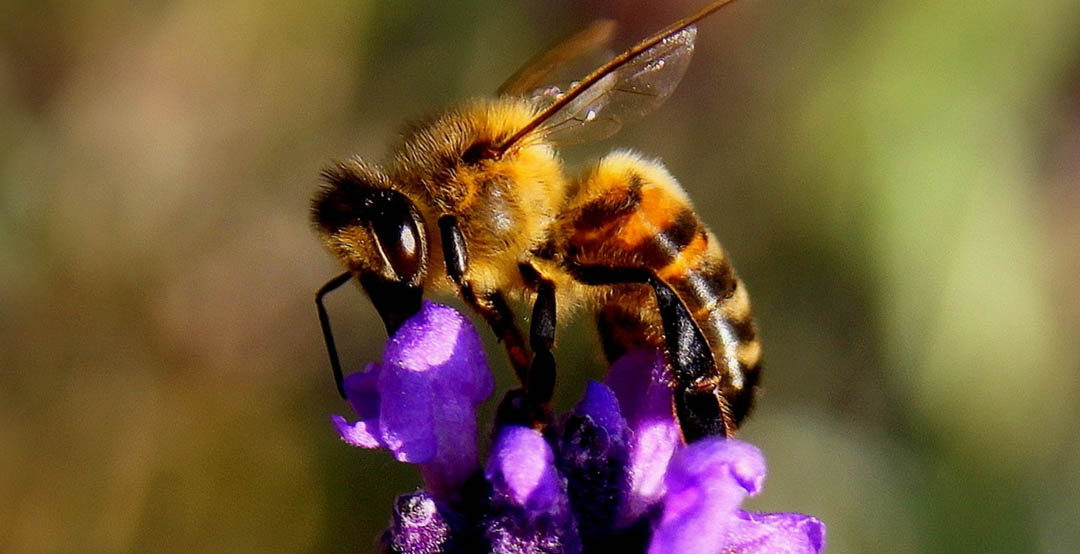
by Herb Exchange | Apr 3, 2019 | Wildlife, Basics, Flowers, Gardening |
No doubt, you are somewhat familiar with the plight of the pollinators. If you listen carefully, it feels as if so much of our natural world is facing a challenge, and it is, but there is something that all gardeners can do to help. Plant a garden packed with the right plants for these pollinators.
We are placing our focus on bees right now, as bees are the most critical pollinator we have. To refresh your memory, the issues facing bees are simple:
- Loss of flowering plants
- Loss of habitats
- Pests and diseases
- Climate change
We want to think that all of us can affect change, and make a difference, and in this case you can. If we focus on the loss of flowering plants, we can definitely be of service to bees in our world. If the problem is the loss of flower-rich habitats, the solution is to plant the best varieties of plants that provide both pollen and nectar. We grow herbs, and over 60 of our herbs are considered bee friendly. (more…)
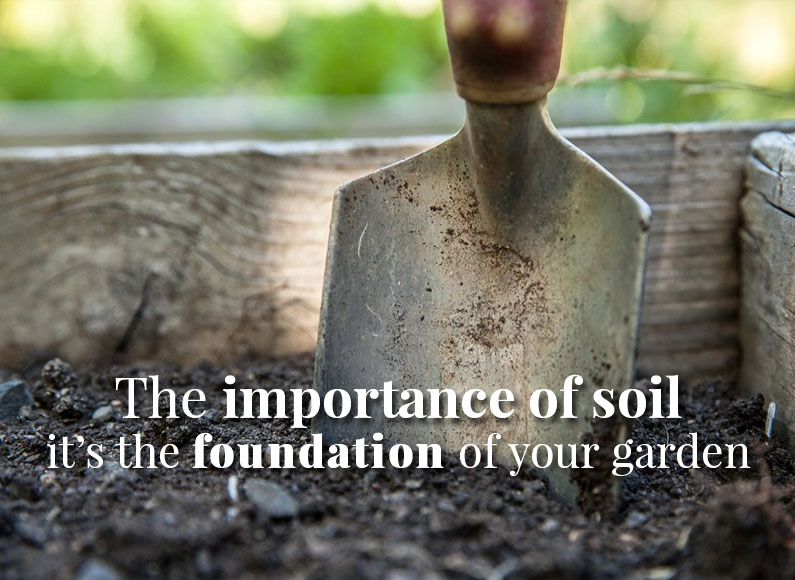
by Herb Exchange | Mar 3, 2019 | Gardening, Basics, Growing |
We’ve written a lot about soil over the years, mainly passing on information that we’ve gathered over 40 + years of gardening. And, although this basic element is so essential to the success of any herb garden, and you’d think we ‘knew it all by now, there is always more to share!
We can’t emphasize this enough: knowing your soil, and understanding what to do to improve your soil, is the most important thing you can do to guarantee healthy and happy herbs. Nutrients must be available to plant roots. Too sandy and porous means that the nutrients are not going to stay in the soil, and will not get to the plants. Too compact and heavy, the soil won’t give up the nutrients and compaction around the roots means that you run a good chance of losing your herbs.
Good soil is the foundation for healthy herbs:
- Soil provides access to nutrients, water, & air
- Soil stabilizes a plant’s roots
- Soil assists a plant’s natural resistance to pests and diseases
We classify soil in terms of its consistency:
- Sandy soil is easy to dig, but it doesn’t hold nutrients or moisture. On its own, sandy soil cannot provide your plants with the necessary ingredients for growth.
- Heavy Clay soil is heavy and the clay tends to bind the soil, not allowing air to penetrate and holding water risking rot of your roots. Additionally, that sticky soil will not release the needed nutrients.
- Loamy soil is a perfect balance that provides your plants with moist and crumbly soil that smells rich and ‘earthy’. A significant component of this wonderful blend is compost, decomposed organic matter sometimes referred to as humus.
(more…)
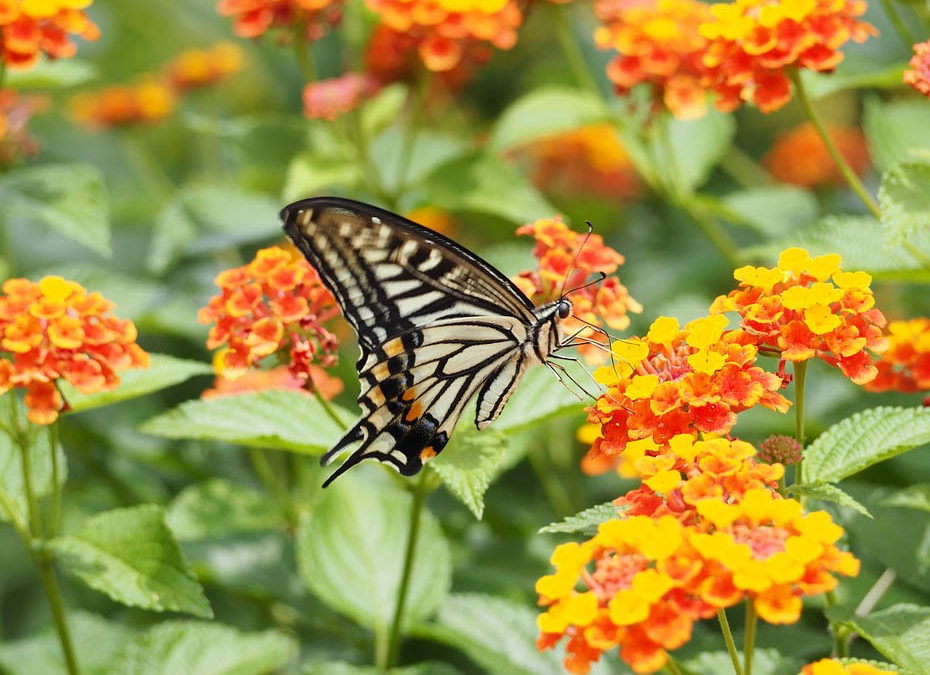
by Herb Exchange | Sep 5, 2018 | Basics, Flowers, Gardening |
The name of the large genus Lantana may be more commonly known to most people as verbena. The genus comprises more than 150 species, make it a versatile and plentiful group of plants to choose from when selecting perennials for a garden or landscape. In fact, there are so many varieties of verbena that is can be difficult to navigate the sea of colors, growth heights and blooming patterns of the group. Fortunately, we’ve captured all the basics here for you, so read on to learn more about this lovely and prolific genus.
Lantana Variations & Cultivars
Lantanas are available in a rainbow of colors, and more are being introduced all the time. Varieties may grow low to the ground as a plant or get a little taller like a shrub. Some of the common shades are red, white, blue, yellow, orange, and even blue, but many plants feature blooms that change hue as the season progresses. Let’s take a look at some of the most popular varieties and their characteristics:
- Lantana camara: Also known as Spanish Flag, this is the most widely available varieties of lantana, and there are many cultivars within this species such as Dallas Red and Irene. In fact, when a lantana plant is label simply as “Common Lantana,” it’s extremely likely it’s a camara cultivar.
- Lantana montevidensis: This variety often is referred to as trailing lantana or shrub verbena. It comes in many different colors and can bloom year-round in tropical climates. It’s often used ornamentally in flower gardens.
- Lantana depressa: The name says it all for this variation, which spreads like ground cover and features small, colorful blooms.
- Lantana strigose: Rough Shrubverbena earns its name from its “hairy” leaves. The blooms, however, are identical to those found on common lantana varieties.
- Lantana involucrate: This variety loves tropical areas and also may be called buttonsage or wild sage because of its fragrance.
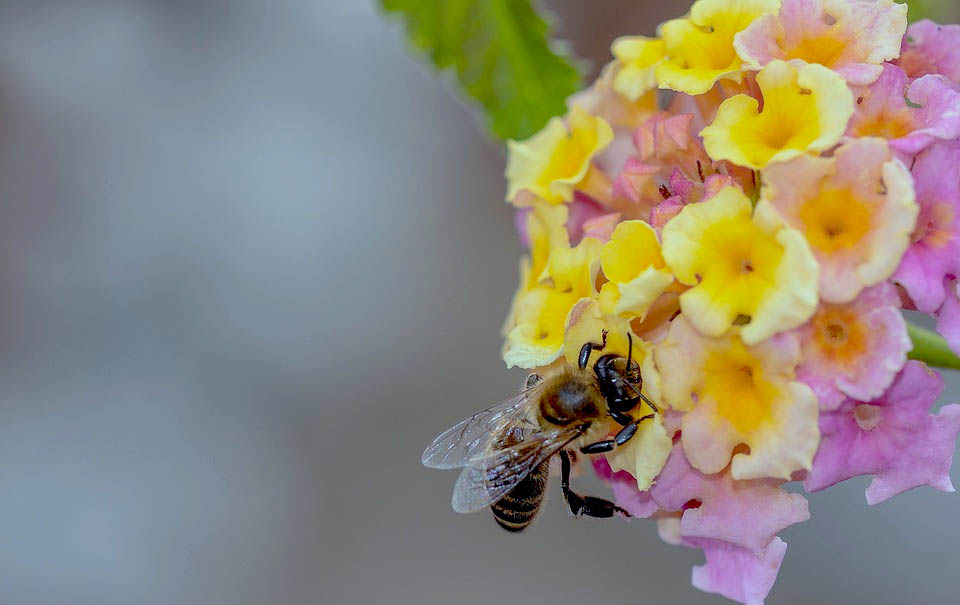
Tips on Planting Lantana
Lantana is widely considered a perennial in tropical regions of the globe, but it also grows fairly widely as an annual. Plants thrive in the southeast part of the United States but also can be found in Ecuador, Madagascar and the Galapagos Islands. They are so prolific in Australia that they are considered an invasive species and efforts are made to control their growth. If you are considering planting lantana in your garden or landscape, here are the guidelines to follow:
- Zones: In the United States, lantana does best in USDA Plant Hardiness Zones 7 and above. In the cooler regions, it is an annual; in warmer areas it can bloom all year. It also commonly is used as a houseplant thanks to its long blooming period and bright, cheerful colors. If the plant is in a pot on the patio during summer, it should be brought inside when temperatures drop to around 50 degrees.
- Sun exposure: Lantana like bright sunlight for at least six hours per day in order to maintain their profuse flowers. However, although you can grow them in full sun, they appreciate a bit of afternoon shade so try to plant them in places where they will get a few hours of part sun.
- Soil: Lantana grows best in moist, well-drained soil, that’s slightly acidic, but they can survive in drier conditions. Drainage is important as they don’t live as long with wet roots. Lantana thrive in pots but need some sort of moisture source. If you will using lantanas as houseplants, place the pot over a plate with water and rocks for moisture. They are quite easy to grow indoors as long as they have enough sunlight each day. Remember to rotate the planter weekly so they don’t start ‘leaning in’!
- Timing: Lantanas come into home and garden stores usually in the early spring before the bloom. Once they have flowered, the bloom should last at least into the early fall. In zones 7 and above, plant lantana in the fall and enjoy the colorful blooms late into the winter months. If you are using a variety that can survive in Zone 7, we recommend mulching heavily in case of a prolonged freeze.
- Landscaping: This is an extremely popular genus for landscape plants. You can plant the lower-growing versions along walkways, on ledges or near riverbanks. The trailing varieties in particular make ideal container plants, especially when combined with the bright green of sweet potato vine. The shrub varieties, which grow taller, can be used throughout a landscape design where foliage and prolific pops of bright color are needed. You may want to consult with landscapers Christies Landscapes, or ones more local to you, to discuss how best to position these and what would compliment them. They fill a corner spot well but also get along with most other garden plantings. Some people even choose to create a lantana tree. This involves starting a shrub lantana variety in the spring and carefully pruning it as new growth appears. The stem should be supported with a bamboo stick until the plant is strong enough to stand on its own. With timely pruning and transplanting, a tree shape will appear, and the plant can bloom continuously if brought into the house starting in the fall.
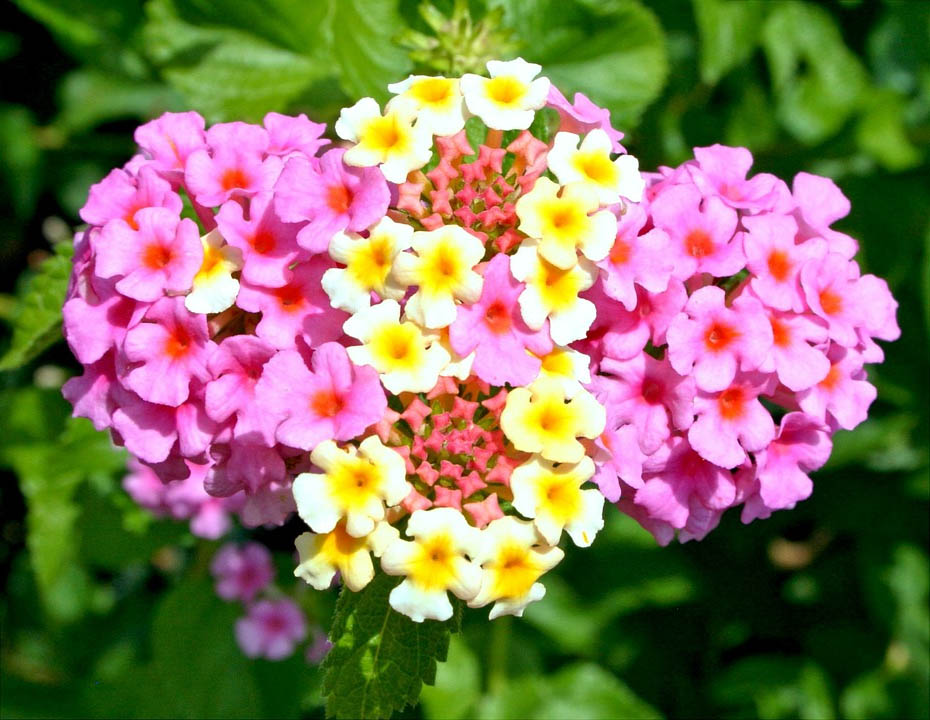
Care for Lantana Plants
Lantanas are not a fussy bunch, but they still have their needs and vulnerabilities. In the garden they require basic maintenance, and as a houseplant they need trimming and light in order to sustain their flowering habit. Here are some guidelines for how to keep your lantanas happy and healthy no matter where they are planted:
- Blooms: In tropical climates, lantanas can bloom nearly year-round. In the southern United States, they serve mostly as annuals, showing flowers from spring into fall. The range of colors lantanas may take is nearly unlimited. Red, orange, yellow, blue, and purple flowers are easy to come by. One of the most endearing traits of lantanas is that their blooms change color as the season progresses, so a yellow flower might eventually morph into an orange or reddish bloom, sometimes with more than one shade on a single petal. The cheerful colorations that lantanas offer is the chief reason it is so popular among gardeners across the United States.
- Leaves: The leaves of lantana species are fairly small and medium green with a serrated spear shape. Many varieties have a fuzzy hand feel (see strigose, above), but some are smooth. The leaves are one of the first indicators of poor plant health. Changes in coloration or spotting likely are signs of an infestation.
- Trimming: Lantanas respond will to trimming both indoors and out. Pruning of outdoor plants should take place in the spring. Gardeners may cut back about a third of the growth. Deadheading spent blooms can keep the plant looking attractive all season long, but it is not vital to its health. Indoor plants should be trimmed periodically to keep them at a size that’s appropriate for the indoors. If you are thinking about getting an indoor plant then you might want to see this website here on how to help them grow further. Tree-trimmed specimens require routine pruning to help maintain their shape.
- Fertilizing: Although it is not crucial, some gardeners prefer to fertilize their lantana plants. Use a balanced fertilizer of about 10-10-10, and be careful not to overdo it. Too much fertilizer can burn and kill the plant.
- Pests: There is a common belief that the leaves of lantanas are poisonous to many herbivores, but there are some bird species that consider them to be quite tasty. To stop these birds from feasting on the plants, a plymouth bird mesh system can be implemented to protect the plants from being harvested. It is believed that their rampant growth in Australia might be due to its undesirable taste among some animals. They also might be dangerous for pets if eaten routinely.
- Disease: Though hardy, the lantana genus has its share of natural threats. Insects such as lace wings or white flies can attack the leaves, making them turn black. There some molds that might make their home in lantanas as well, including powdery mildew or sooty mold. These, along with the insect problems, may be treated with chemical sprays formulated for plants.
- Propagation: Stem cuttings are the easiest way to propagate lantanas, though some people use start them from seeds as well. To take grow a stem cutting, snip three inches of a nonflowering shoot and dip the ends into root hormone, carefully avoiding any low-growing leaves. Plant the cutting in a mix of perlite and peat moss and place the tray in a plastic bag situated next to a window that has filtered light (such as through a sheer curtain). After a few weeks, roots should have formed, and the plants may be removed from the bag and placed into larger individual pots.
- Berries: Lantanas produce berries that often are blamed for sickening people or animals that consume them. However, there are humans who routinely make pies out of the ripe berries or eat them while hiking if they find them along the trails. The general rule is to avoid unripe berries entirely and use caution if eating ripe versions.
- Attractants: Another lantana selling point is the fact that the plants attract butterflies to the garden in many parts of the United States. Hummingbirds, also, are frequent visitors to yards that have lantanas as part of the landscape. If you want to attract hummingbirds and butterflies near your home so you can observe them through your window, plant lantana varieties in hanging pots placed near the windows. Certain birds also like to harvest the bright flowers of lantana plants to decorate their nests and attract mates.
- Bees: Because honey bees create distinct varieties of honey depending on what types of plant from which they are gathering nectar, some people plant large swaths of lantanas to get lantana honey. This is mostly common in areas where large meadows of the plant grow freely.
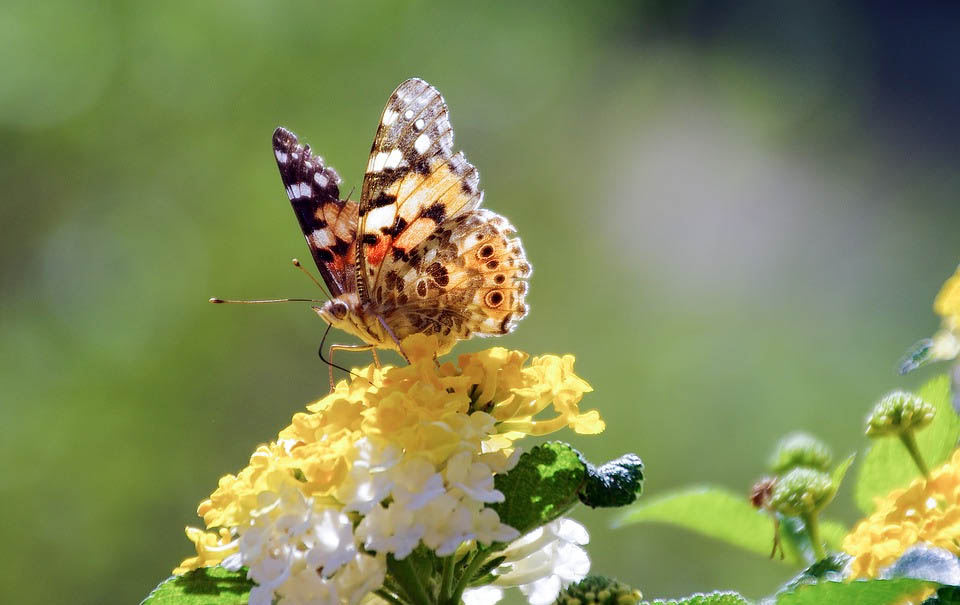
How to Use Lantata Plants?
Despite the plant’s reputation for being poisonous in some cases, there still are plenty of people who consume parts of the plant or use it for various other purposes. Here are some of the ways in which lantanas are used for more than just pretty garden plants.
- Wood: Tribal cultures in India use the wood stems of the plant to make furniture that resists rain, sun, and termites. For them it is readily available and much less costly than bamboo.
- Extracts: Distilled extracts made from the plant may be an effective insecticide for other plant species such as cabbage. There is a particular type of aphid that can be terminated using the extract.
- Oil from leaves: Commonly called “verbena” when used as a scent ingredient, the oil from lantana leaves is lightly citrusy and quite strong. Candles, body lotions, and room fresheners may include fragrance oil for lantana.
- Medicinal: By far the most popular and varied use the lantana plant aside from landscaping is its touted medicinal use. The oil may be used to treat skin rashes and sooth cuts, abrasions and stings. Some people allow the leaves to steep in a water bath, and soaking feet or elbows in the water may help alleviate the pain of rheumatism. Brewing the leaves into a tea is a traditional treatment across the globe to help with cold symptoms, headaches, fever, and indigestion. Other people inhale the steam from the hot tea to address respiratory ailments. Even the roots of the plant may be pressed into service. After they are dried, they are brewed and consumed to allegedly treat flu symptoms and cough.
- Repellant: The highly fragranced leaves often are dried and burned. The smoke is said to repel mosquitos and other pesky insects.
- Culinary: As mentioned above, it is not unheard of for people to harvest ripe berries from lantana species and use them in cooking. In Ecuador, residents make them into jams, pies, and beverages regularly. Still, the debate about their toxicity continues.
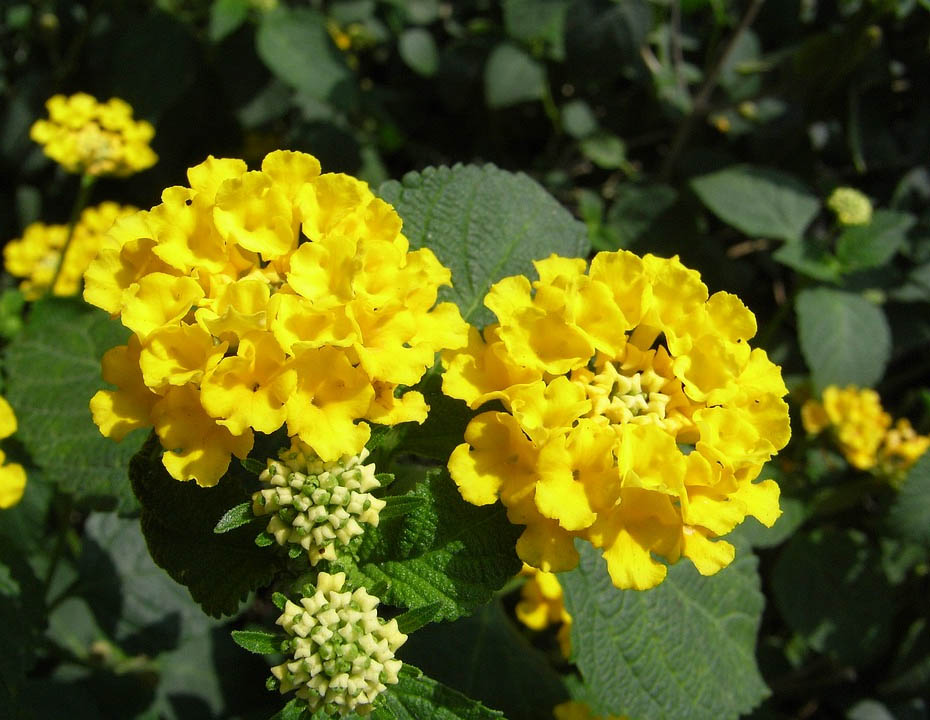
Final Thoughts
Clearly, the lantana genus contains a huge variety of species, preferences, and uses. In some countries, it is considered at best a weed and at worst an invasive species. But there are still more regions in which lantana is embraces as a beautiful and prolific blooming landscaping plant that no garden is complete without.
Gardeners enjoy lantana for its relative ease of growth and wide variety of blooming colors. Those who want to attract butterflies and hummingbirds to their garden spaces may plant lantanas throughout the landscape. The discussion about the toxicity of its leaves and young berries as they pertain to wild animals, pets, and humans continue to be debated, but in the ripe berries seem to relatively safe for consumption.
Truly the lantana is useful plant to have in your gardening repertoire, so don’t hesitate to consider it for your landscape, container or planting box. Bring a bit of cheerful color and butterfly beauty to your home.
[wps_products collection="Lantana Plants" items_per_row="4" title_color="#6BBEE7" show_featured_only="true"]

by Herb Exchange | Jul 17, 2018 | Basics, Herbs |
Spring is such a frenzied time for a gardener, and so many of us, tired of the dreary winter, tend to jump the gun and live to regret it. Yes, even veteran gardeners give into emotion when we see all of those bright annuals luring us into the garden center in March. What we don’t see, however, is their weary staff trying to hustle carts back into the greenhouses in the evening after a snap frost has been forecasted. Or, planting early when the soil is still cold, being frustrated by no growth. Do you expect your cake to bake when the oven is off?
Ah, Spring ~ the fickle season. Bringing us out on a lovely day then slapping us back inside with an unexpected snowstorm. “Cover the “ – you can fill in the blank! And on the other side of spring, another lovely day followed by a scorcher – “Water the “ and fill in the blank! (more…)








